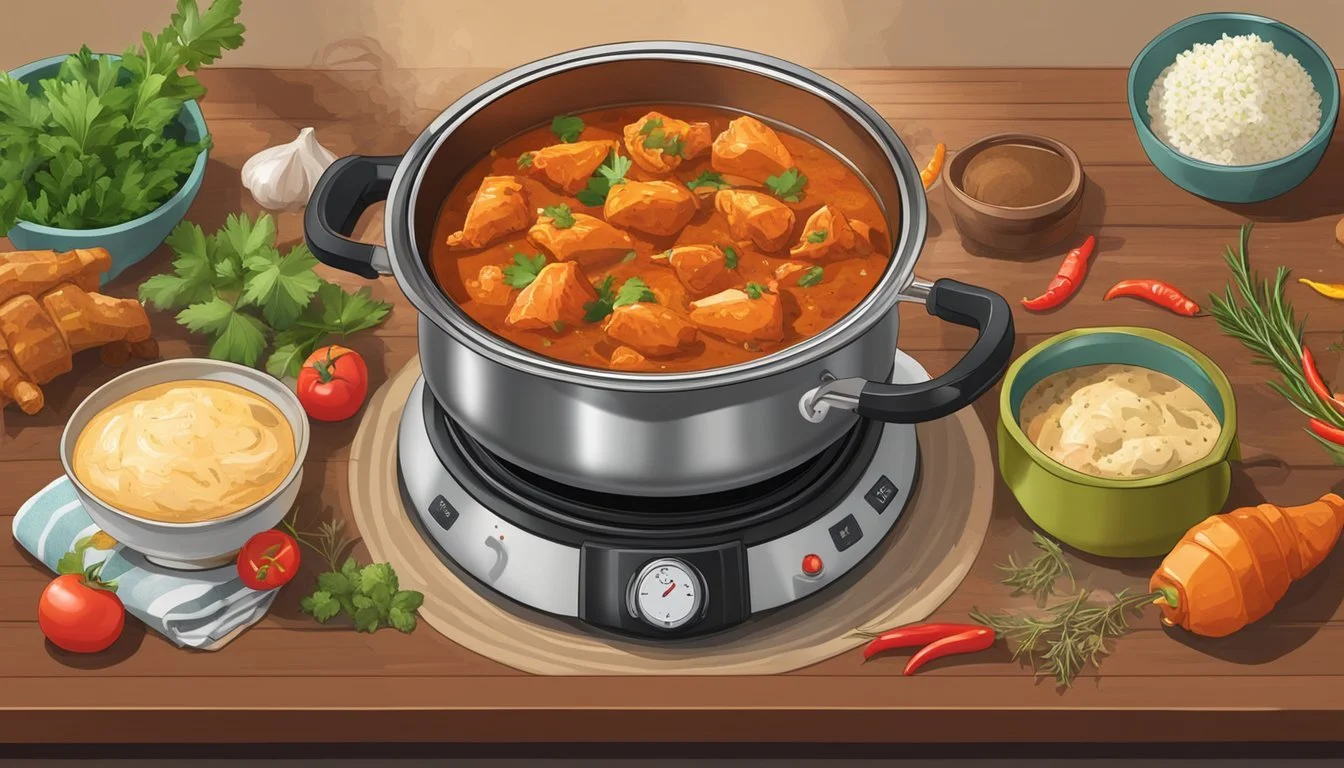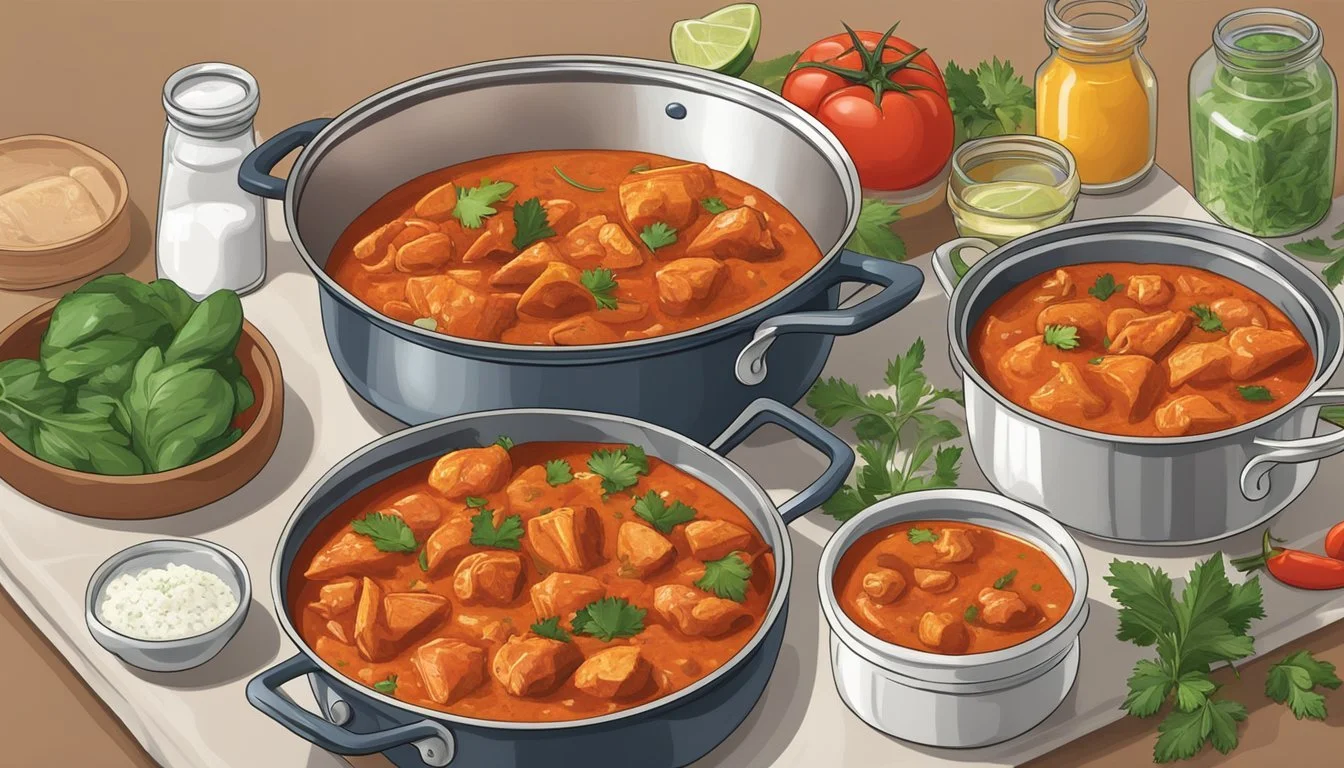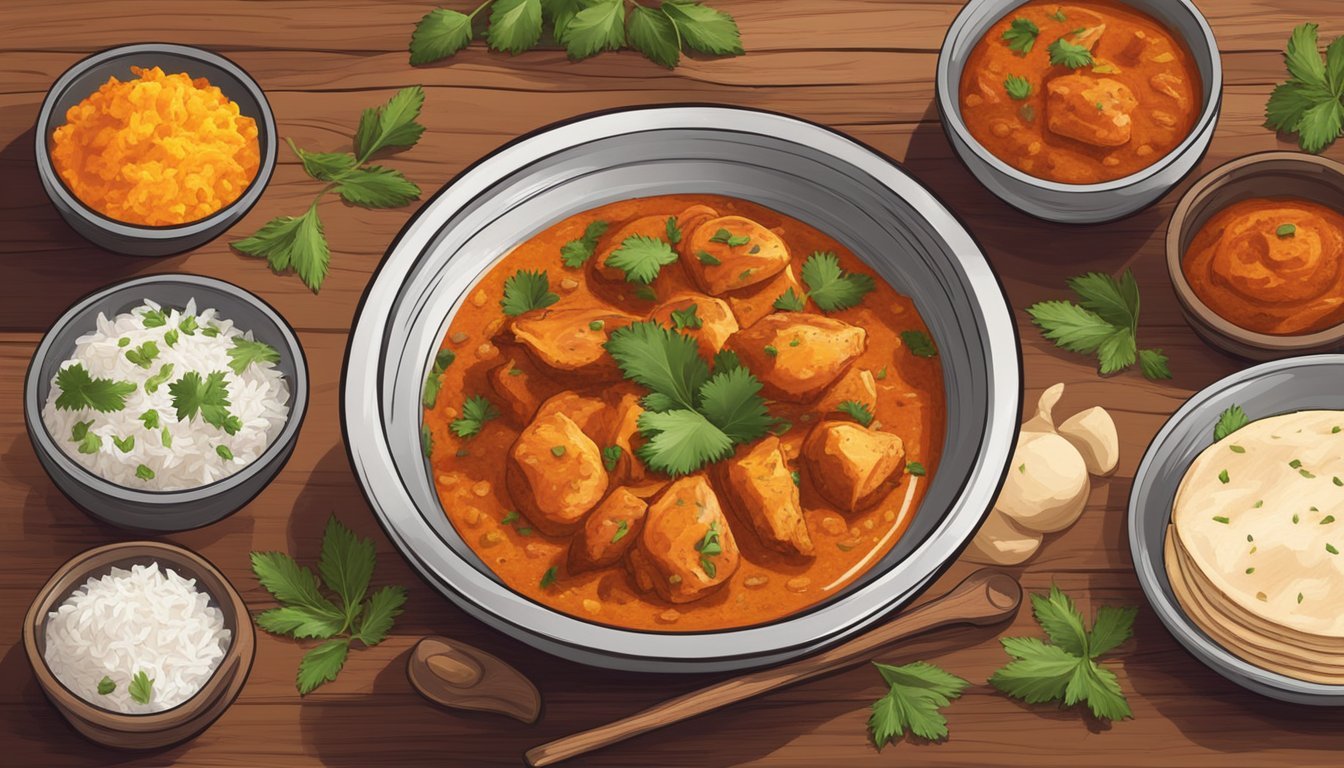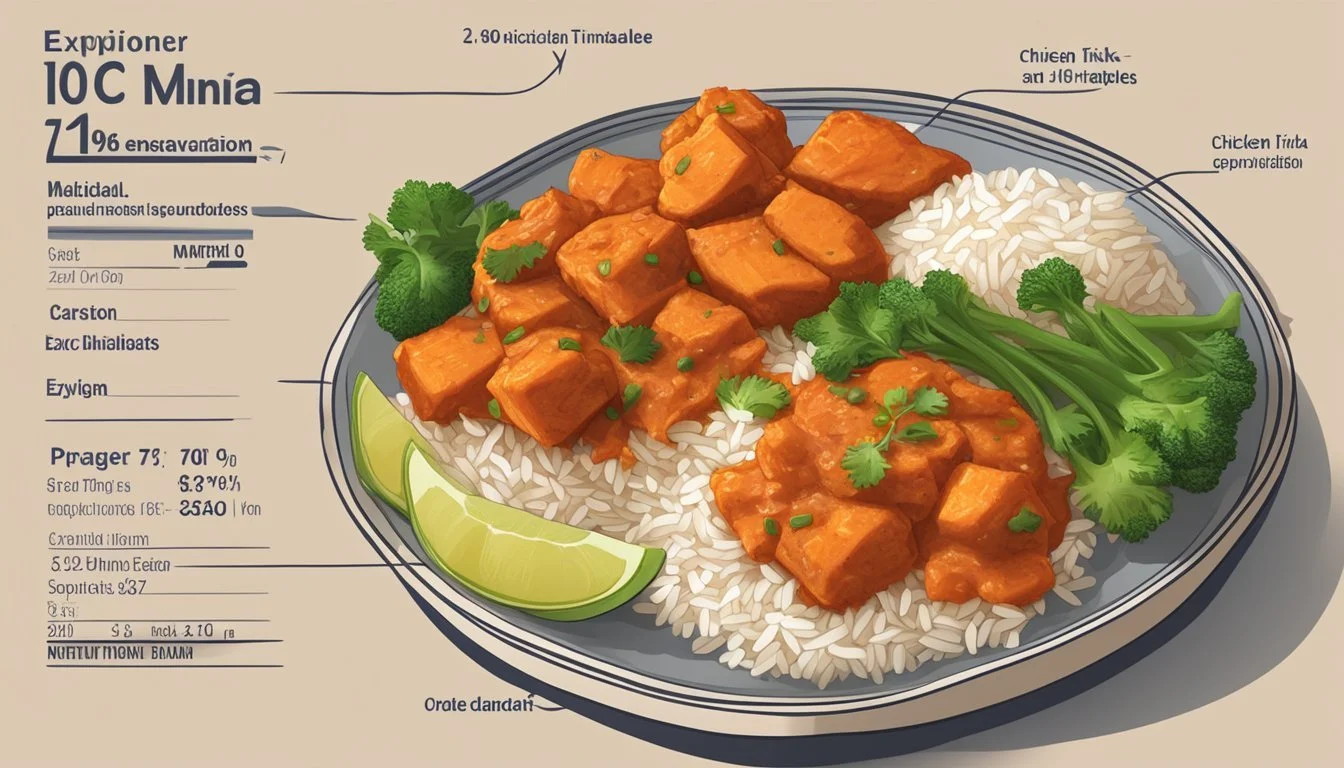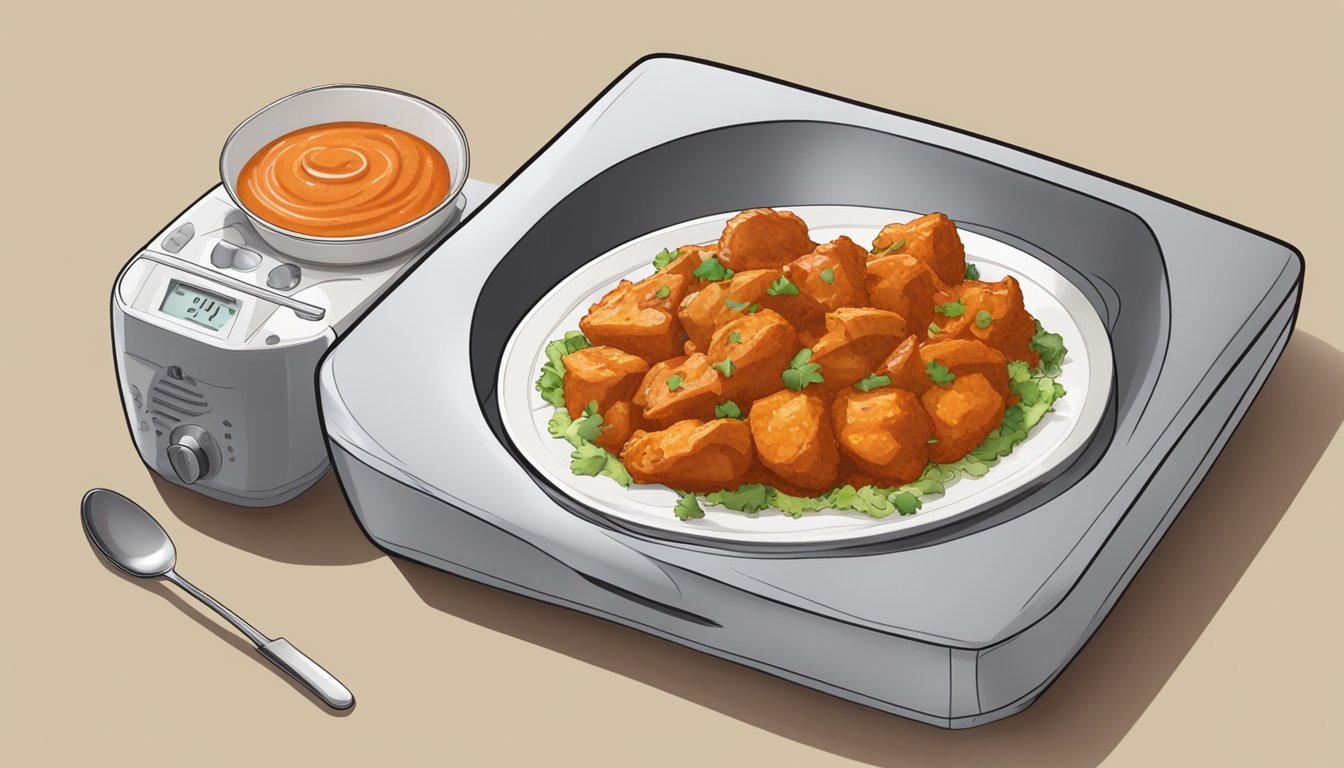How Long Does Chicken Tikka Masala Last?
Storage Tips Explained
Chicken Tikka Masala, a beloved dish in Indian cuisine and a staple in many fusion recipes, raises questions about storage and longevity. Leftovers of this rich, flavorful curry can last 3-4 days in the refrigerator, provided they are stored in a sealed or air-tight container. Some might wonder about longer-term options; fortunately, chicken tikka masala also freezes well, lasting several months when frozen and properly handled.
When considering meal prep or making ahead, it's important to note that Chicken Tikka Masala offers flexibility. The marinated chicken can be prepped up to 48 hours in advance and stored in the fridge, or even frozen and marinated during the defrosting process. This not only saves time but also enhances the flavors as they meld together.
Overall, understanding the storage timeframes for this dish allows for better planning and enjoyment of chicken tikka masala. Knowing it can stay fresh in the fridge for a few days or be frozen for future meals ensures that its delicious taste can be savored without the worry of spoiling too quickly.
Understanding Chicken Tikka Masala
Chicken Tikka Masala is a beloved dish that combines marinated, grilled chicken with a rich, creamy tomato sauce. Its history and composition highlight both its traditional roots and its status as a popular restaurant choice.
Origins and Popularity
Chicken Tikka Masala owes its origins to the Indian subcontinent, particularly from Punjabi cuisine. The key to its flavor lies in the marinated chicken, which is traditionally cooked in a tandoor. This clay oven imparts a distinct smoky flavor.
While Chicken Tikka itself is simply the marinated and grilled chicken, Chicken Tikka Masala includes a creamy tomato sauce. The sauce differentiates it from similar dishes, enhancing its appeal. This fusion of traditional grilling methods and rich sauce has helped it gain popularity worldwide.
Comparing Chicken Tikka and Chicken Tikka Masala
Chicken Tikka involves marinating chicken pieces in yogurt and spices like garam masala, turmeric, and ginger, then grilling them in a tandoor. This method results in tender and smoky-flavored chicken.
Chicken Tikka Masala, on the other hand, starts with the same marinated and grilled chicken but adds a new dimension with the creamy tomato sauce. This sauce is made with tomato puree, cream, and spices, providing a richer and more indulgent flavor profile.
While both dishes share the initial marination and grilling process, the masala variant offers a complete meal with a sauce that complements the smoky chicken, making it a favorite in restaurants and homes alike.
Essential Ingredients
To craft a delicious Chicken Tikka Masala, it's important to understand the essential ingredients that contribute to its rich flavor and textures. These ingredients can be divided into spices and seasonings, proteins and dairy, and vegetables and other components.
Spices and Seasonings
Spices form the backbone of Chicken Tikka Masala, providing its distinctive taste and aroma. Garam masala, an aromatic blend of ground spices, is key for its complex flavor. Other critical spices include turmeric, cumin, ground coriander, and chili powder. The precise balance of these spices ensures the dish has the right mix of heat and earthiness.
Proteins and Dairy
Chicken Tikka Masala traditionally uses chicken thighs due to their moistness and flavor, although tofu or paneer can be substituted for a vegetarian option. For marinating the chicken, a mixture containing Greek yogurt or regular yogurt is often used, adding tanginess and helping to tenderize the meat. Heavy cream or dairy-free alternatives like coconut milk are incorporated into the sauce to create its creamy consistency, while butter provides richness.
Vegetables and Other Ingredients
Vegetables are fundamental to both the marinade and the sauce. Essential ingredients include yellow onions, ginger, and garlic for their aromatic qualities. Tomatoes or tomato paste are used to form the base of the sauce. Cilantro adds a fresh, herbal note, and lemon juice is sometimes included to enhance the overall flavor profile. Additionally, cauliflower can be a nice accompaniment to absorb the flavorful sauce.
Preparation Techniques
Proper preparation of Chicken Tikka Masala is critical to achieving the desired flavor and texture. This includes marinating the chicken and selecting the right cooking method.
Marinating the Chicken
For marinating, choose boneless skinless chicken thighs, cutting them into bite-size pieces. The marinade typically includes plain yogurt, lemon juice, and spices like garam masala, turmeric, smoked paprika, chili powder, and cumin.
Mixing these ingredients in a large bowl ensures the chicken is fully coated. Marinating for at least six hours, or overnight, allows the flavors to fully penetrate the meat. Keeping the marinated chicken in the refrigerator during this time is recommended.
Cooking Methods
When cooking Chicken Tikka Masala, various methods can be used, such as grilling, baking, or using an instant pot. Different methods bring out different textures and flavors. Cooking in a Dutch oven involves heating vegetable oil or butter over medium heat.
Adding onion, garlic, and ginger to the heated oil and cooking until onions become translucent starts the cooking process. Then, add the marinated chicken and cook until golden. Alternatively, cooking in an oven at 350°F (180°C) or grilling can impart a slightly charred flavor.
Simmer the sauce, if needed, by blending it to a smooth consistency before adding in the cooked chicken for final cooking.
Serving Suggestions
Chicken Tikka Masala can be enjoyed with a variety of accompaniments and garnishes, enhancing its flavor and presentation. Below are some suggestions to elevate your dining experience.
Accompaniments and Pairings
Serving Chicken Tikka Masala with naan bread or steamed basmati rice is traditional and highly recommended. Naan is perfect for scooping up the rich, creamy sauce.
Presentation and Garnishes
To enhance visual appeal, consider garnishing with finely chopped fresh cilantro. Drizzling a bit of cream over the top can also add an inviting finish.
Health and Nutrition Information
Chicken Tikka Masala is a flavorful dish with a balance of protein, fat, and carbohydrates. It can be adapted to suit various dietary needs.
Caloric Content and Dietary Considerations
A standard serving size of Chicken Tikka Masala (225 grams) contains approximately 270 calories. This portion provides about 8 grams of fat, 17 grams of protein, and 31 grams of carbohydrates. The dish offers a moderate protein content, making it a good option for those looking to increase their protein intake.
Chicken Tikka Masala often includes cream, which contributes to its higher fat content. According to Nutritionix, a serving can have up to 48 grams of fat, of which 28 grams might be saturated fat. Individuals watching their fat intake should be mindful of these values.
Adaptations for Special Diets
For those following a dairy-free diet, coconut milk can replace traditional cream, offering a similar texture and flavor with a reduction in saturated fat. Additionally, using low-fat yogurt instead of cream can lower the fat content without compromising taste.
Vegetarians can enjoy similar flavors by substituting chicken with tofu or paneer. Paneer Tikka Masala provides a high-protein alternative for vegetarians, while tofu offers a low-fat and cholesterol-free option.
To reduce sugar content, avoid recipes that add extra sugar to the sauce. Opting for fresh ingredients over pre-packaged mixes can also help control added sugars and other additives. These adjustments ensure the dish remains healthy and tailored to various dietary requirements.
Storing Chicken Tikka Masala
Proper storage practices ensure maximum freshness and extend the shelf life of chicken tikka masala. Key methods include effective refrigeration and freezing techniques.
Freezing and Thawing Tips
Freezing:
Chicken tikka masala can be frozen for long-term storage. Use airtight containers made of glass or food-grade plastic to preserve flavor and freshness. Portioning the masala into smaller servings before freezing helps with quick and easier thawing. Ensure the dish is at room temperature before placing it in the freezer to avoid condensation and freezer burn.
Thawing:
To thaw, keep the chicken tikka masala in the refrigerator for 24 hours. For faster thawing, use the microwave's defrost setting, stirring halfway to ensure even thawing. Once thawed, heat the chicken tikka masala thoroughly in a saucepan or microwave until it reaches an internal temperature of at least 165°F (74°C). Avoid repeated cycles of freezing and thawing to maintain optimal flavor and texture.
Reheating Instructions
To reheat chicken tikka masala effectively, it is essential to focus on achieving the right temperature for safety and using techniques that maintain its creamy texture. Each method has specific steps to ensure the dish remains as delicious as when it was first made.
Safe Reheating Temperature
Chicken tikka masala should be reheated to an internal temperature of 165°F (74°C) to ensure it is safe to eat. Using a food thermometer helps in accurately checking the temperature.
Leftovers should be reheated quickly to reduce the risk of bacteria growth. Avoid reheating the dish multiple times as this can compromise both safety and texture.
Methods for Maintaining Texture
Microwave:
Place chicken tikka masala in a microwave-safe dish.
Cover with a microwave-safe lid or wrap to prevent drying out.
Heat on medium power in 1-2 minute intervals, stirring occasionally, until the desired temperature is achieved.
Oven:
Preheat the oven to 350°F (175°C).
Transfer the dish to an oven-safe container and cover with foil to retain moisture.
Bake for 15-20 minutes or until thoroughly heated.
Stove:
Use a non-stick pan over medium heat.
Add a few tablespoons of water or broth to keep the sauce creamy and moist.
Heat, stirring frequently, until the chicken is warm throughout.
Each method helps maintain the soft, creamy texture of the chicken and sauce while ensuring that the dish is heated properly.
Creating a Homemade Tikka Masala
Creating a homemade Tikka Masala involves selecting the right ingredients and understanding the methods for both simplicity and customization.
Simple Tikka Masala Recipe
A straightforward recipe begins with marination. Combine yogurt, garlic, ginger, and various spices such as garam masala, smoked paprika, cayenne pepper, and salt. Cut the chicken into pieces and marinate it for at least 30 minutes. This initial step ensures the chicken is flavorful and tender.
Next, cook the marinated chicken in a hot skillet until it's charred and cooked through. In a separate pot, prepare the sauce by sautéing onions, garlic, and ginger in butter. Add spices including garam masala and paprika, then stir in tomato puree and cream. Combine the cooked chicken with the sauce, simmer for a few minutes, and serve.
Customizing Your Tikka Masala
For those who enjoy a personalized touch, Tikka Masala can be adjusted to fit different preferences. Substitute cream with coconut milk for a lighter, dairy-free option. You can also vary the spice levels; add more chilies or cayenne pepper for extra heat or reduce them for a milder dish.
For a fusion twist, try adding vegetables like bell peppers or peas for additional texture and flavor. Experiment with different meats, using lamb or beef instead of chicken. Ensure the marination process and core spices remain consistent to maintain the dish's essential flavors.
Adapting the recipe allows for versatility while still delivering the rich, robust taste of traditional Tikka Masala.



